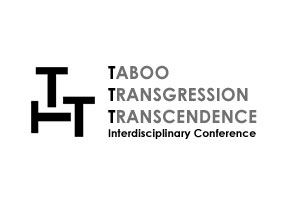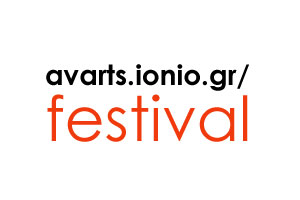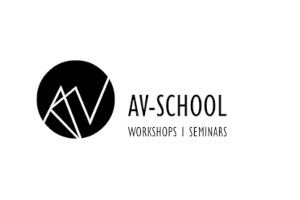Abstract
This work presents a preliminary design of an Augmented Reality (AR) application that utilizes geolocation and geofencing techniques through handheld devices to promote a city's points of interest. Based on literature review, use-case analysis, and prototype testing, the study explores how AR-enhanced navigation and location-based triggers can improve engagement with urban cultural and historical landmarks. The proposed implementation focuses on providing an interactive and immersive experience, allowing users to explore cityscapes through real-time digital overlays, multimedia content, and gamified elements that enhance tourism, education, and local engagement.
Keywords
Augmented reality, geolocation, geospatial, geofencing,
- Summary
With the increasing integration of AR technologies in urban exploration and tourism, geolocation and geospatial-based experiences are becoming essential tools for cultural promotion [1]. This work investigates how AR geofencing techniques can enhance user interaction with a city's points of interest, offering personalized and dynamic content based on the user's location. By leveraging GPS and internet technology, AR applications can provide geospatial location-specific information, interactive storytelling, and gamification elements to make city exploration more engaging [2]. The study also examines how these technologies can be applied in various contexts, such as heritage preservation and educational urban experiences.
- Objective
The primary objective of this study is to identify the core functionality requirements of an AR geolocation framework to enhance user experience and improve city exploration. Specifically, the work aims to develop geofencing-based content delivery, ensuring users receive relevant information based on their proximity to points of interest. Integrate interactive AR overlays, such as historical reconstructions, multimedia content, and real-time guided navigation. Implement gamification mechanics, such as achievement-based exploration, rewards, and AR scavenger hunts, to enhance engagement. Offer modular and scalable design solutions adaptable to different cities and cultural settings.
- Method
The outcomes of this study are based on a review of contemporary literature on AR geolocation applications, geofencing techniques, geospatial data and urban tourism technologies. A detailed use-case analysis is performed, considering the perspectives of both city visitors and local stakeholders. At this stage of the research, system and accuracy testing was conducted by the development team, focusing on both horizontal accuracy and altitude deviation during landmark-to-landmark navigation. These tests were carried out in diverse urban conditions, including open areas and closed-field environments. Additional testing included "dead spot" to landmark navigation, and deviations caused by real-world obstacles such as trees, building density, and adverse weather conditions, aiming to gather real-time feedback testing. The goal is to assess usability, engagement, and the experiential impact of AR-enhanced city exploration under varied environmental conditions. The results of this focused testing will guide the design of a broader-scale evaluation in the next phase of the study.
- Results and Discussion
The preliminary accuracy testing shows that the employed technique provides satisfying accuracy in open areas but in closed-field environments users may face errors potentially affecting user experience. Tests revealed that altitude shifts influence the accuracy of AR content placement. When navigation begins at higher altitude and moves toward lower points, AR content appears lower or clipped into the ground. During the tests it was observed that restarting the GPS session after a substantial altitude change can recalibrate the vertical accuracy. However doing so in closed-field environments may negatively impact horizontal accuracy. We propose UI-based guidance for GPS reset recommendations, acknowledging its effectiveness for local users while noting potential limitations for unfamiliar users such as tourists.Usability testing and evaluation are currently in progress with a small user group, and the results are expected to be available by the time of the conference
Conclusion
By integrating geolocation and geofencing techniques with AR technology, this work proposes a framework for transforming urban exploration into an interactive and immersive experience. The findings contribute to the development of scalable AR solutions that promote cultural heritage, enhance tourism, and engage local communities through dynamic digital interactions.
References
[1] Sánchez-Juárez, Ivan & Paredes-Xochihua, Maria. (2024). Augmented reality as a support for tourism promotion. ECORFAN Journal Republic of Paraguay. 10. 10.35429/EJROP.2024.10.18.1.10.
[2] Baizakova, Aiganym & Taskarinova, Zhansaya & Zhaxalykova, Kamila & Serik, Bekzhan. (2024). Using VR and AR technologies in tourism and hospitality. 10.5281/zenodo.13961312.
Georgios Milis is a graduate audio technology engineer and a master graduate in audiovisual arts at the Department of Audio and Visual Arts of the Ionian University. He has completed two short postgraduate programs in the development of entertainment applications, focusing on the scientific fields of mixed reality application systems. His research interests include the development of serious games and gamified applications using virtual, augmented, and mixed reality environments. Additionally, he explores the field of video games and the potential of interactive installations, with an emphasis on representing cultural heritage through immersive applications. His work also investigates methods of communication and content personalization across various domains such as culture, audiovisual arts, entertainment, and education.
Vasileios Komianos is an Assistant Professor at the Department of Audio & Visual Arts, Ionian University. He received his B.Sc. in Informatics and Telecommunications from the Department of Technology of Informatics and Telecommunications, Technological Educational Institute of Epirus, Greece. In 2013, he received his M.Sc. in Informatics, in the subject area of information systems, from the Department of Informatics, Ionian University, Greece, and in 2017 his PhD in Digital Cultural Heritage and Mixed Reality from the same Department. His current research interests include immersive applications (virtual/augmented/mixed reality) on arts and cultural heritage, smart tourism applications, and assistive technologies in the smart cities context.
Back





